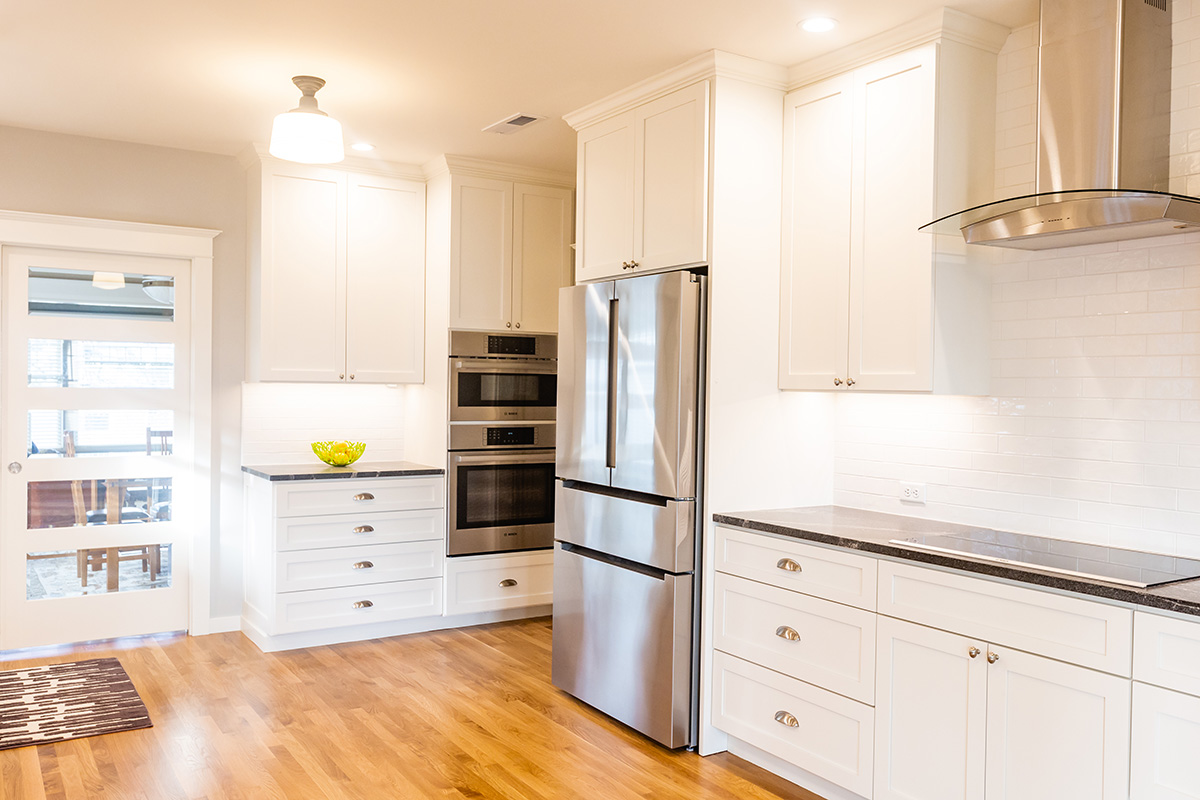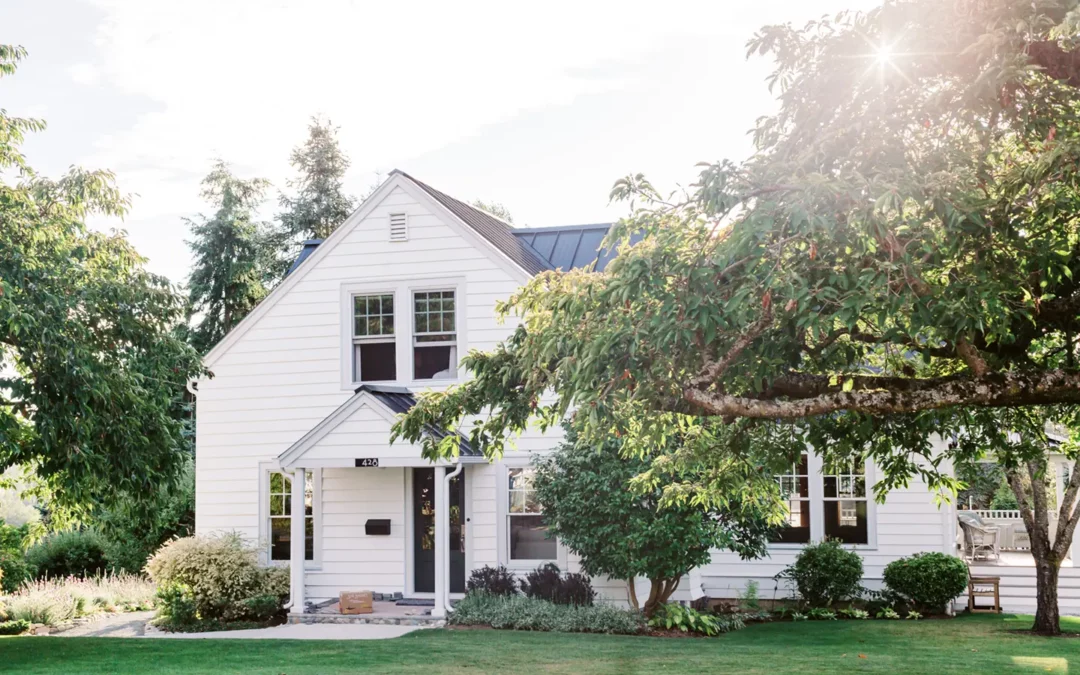How Much Does Restoring Historic Homes Cost?
The cost of a full historic home restoration can vary widely and depends on several factors—including the home’s age and condition, the extent of structural or system updates needed, custom design requirements, and the level of preservation involved.
Projects may range from modest investments to extensive renovations costing hundreds of thousands of dollars, especially for larger properties or those requiring specialized craftsmanship and adherence to preservation standards. A detailed assessment is essential to determine an accurate budget.
In addition to overall square footage, a home in poor condition may require extensive repairs—from foundation work to roofing—and complete updates to its electrical, plumbing, and HVAC systems. These repairs are often more complex and expensive than those in modern homes.
Moreover, sourcing authentic, period-appropriate materials tends to be more difficult and costly than using standard materials, and their installation typically requires highly skilled craftspeople—further increasing labor costs.
Hiring a contractor with experience in historic preservation ensures you have access to the right expertise, materials, and compliance knowledge to restore your home with care and integrity.
What Amount Should I Set Aside for Unexpected Costs?
Given the cost considerations of home restoration, it’s highly recommended to set aside at least 25% of your total budget for unexpected expenses—especially if the home is older or has not been regularly maintained.
Aging materials, outdated systems, and unpermitted or improperly completed work often lead to unforeseen issues. Many historic homeowners are surprised by the extent of hidden damage or deterioration. When such problems are uncovered, they must be addressed immediately to ensure the home’s safety before the planned restoration can proceed.
By including a financial buffer in your restoration budget, you can more confidently manage unexpected challenges and ensure your historic home is restored safely, up to code, and with proper modernization.

Factors That Affect the Costs of Historic Home Renovations
Once you have an estimate of your budget for antique home restoration based on the information above, consider the following factors that can affect your actual costs.
Specialty Permits and Historic Zoning
Aside from the standard permits for remodeling and renovation, your district may require you to obtain additional specialty permits and specialized plans that require the assistance of an architect familiar with historic zoning requirements.
Restoration rules will vary by your region, especially in protected historic districts. You may need to follow specific design, materials, and construction requirements to maintain historical accuracy. For example, historic zoning boards often require detailed documentation before approving your restoration project, resulting in home restorations incurring more fees and longer timelines than standard home remodeling work.
By working with an architect and contractor team experienced in historic home renovation, you can create plans that meet both aesthetic and legal standards.
You may also be eligible for grant funding, tax credits, or historic preservation incentives in your area. Contact the State Historic Preservation Office to learn more.
Modern Building Codes, Infrastructure, and Systems
Most homes built before the 1960s have wiring, plumbing, windows, and framing that no longer meet today’s safety standards. Restoration costs will involve the removal of these outdated materials and their replacement with new, modern structures by historic home contractors.
Lead paint, asbestos insulation and other older materials pose a health hazard to people residing in these older homes and will need to be replaced. Restoration costs can increase when updating electrical and plumbing systems, as they often require demolition and subsequent restoration. These costs also include purchasing the necessary modern materials, such as GGCI outlets and updated service panels.
All of these tasks must be accomplished through the careful craftsmanship of experienced laborers who understand restoration codes, thereby preserving the historic integrity while modernizing the systems.
HVAC
Many historic homes may have traditional heating (fireplaces, radiators, furnaces) that may not meet modern needs. Most of these homes will need a completely new HVAC system to provide proper heating and cooling for residents throughout the years.
We recommend either of these two systems:
- A ductless mini-split system is a non-invasive option and doesn’t require traditional ductwork. As they are mounted on walls or ceilings, they’re ideal for older homes where running ducts would damage historic plaster, woodwork, or layout. They’re efficient, quiet, and also less visually intrusive, preserving their home’s original aesthetic.
- A high-pressure and high-velocity central air conditioning system is also designed for older homes, as they often feature small and flexible ducts that can be easily fitted inside existing walls, joists, and closets. They deliver consistent air temperature and have high energy efficiency ratings. Though more expensive, they minimize structural disruption and preserve plaster, trim, and woodwork.
Remember to choose the right HVAC system for your historic home; find one that strikes a balance between historic preservation and the modern comfort your family deserves.
Specialty Materials
One of the factors that impact the costs of historic home restoration is procuring the needed materials. For historic home restoration, this involves original materials or new ones to match the look and feel of the features being restored.
Features like mantels, moldings, cornices, and stair railings often have unique profiles not available in today’s off-the-shelf inventory. They may require custom milling or specialty woodworking, which raises both materials and labor costs.
Plaster ceilings and walls, especially if they need to be demolished to access the wiring and plumbing, may also require replacement. Unlike modern drywall, plaster is fire-resistant and excellent for soundproofing. But their repair or replication is labor-intensive, costing an average of $3,840 or $48 per square foot, depending on the scope of work.
For homeowners passionate about historic integrity, investing in period-correct materials is worthwhile, even if it requires a higher upfront budget.
Windows and Doors
Historic doors and windows were often built by hand and don’t conform to current sizing or energy codes. They may have poor weather sealing, single-pane glass, or rotting frames, which makes them costly to maintain.
Depending on the restoration guidelines in your area, you can replace them with energy-efficient windows that can cost less in the long term than ongoing repairs.
However, some older windows and doors predate mass production and are truly one-of-a-kind. They may require handcrafted replacements, custom hinges, or materials milled to match the original design. This will require skilled craftsmanship that can raise the cost but add value and beauty to the historic home.
Flooring
A standard material among historic homes is wide-plank hardwood flooring. These floors cost more due to the need for high-quality lumber, larger cuts of wood, and specialized installation techniques. The wider the plank, the more valuable and expensive it becomes.
Other historic homes use reclaimed wood or wood that has previously been used in barns, docks, and other structures to be salvaged and repurposed for another construction project. Reclaimed flooring is typically more expensive than new hardwood as it requires an extensive process for sourcing, cleaning, and preparing the old lumber. It requires specialized labor and tools to install and refinish it without compromising the wood’s character.
The authenticity of these types of wood is part of the appeal for homeowners who want to make a design statement while preserving the home’s historic character.
Insurance
Insuring a home built in the 1950s costs an average of 56$ more than a newly constructed home, with premiums around $209 monthly due to increased risk and harder-to-replace components.
Old homes are riskier for insurance companies. Even minor issues, such as a roof leak, can cause significant damage and substantial costs. Many historic homes also feature custom trim, masonry, or antique fixtures that are not easily replaced with modern equivalents, which insurers must factor into when setting your premium.
Homeowners must seek providers who understand the unique needs of historic preservation and can offer policies that account for accurate rebuild values.
Ready to Restore Your Historic Home?
Vintage home restoration is a rewarding journey of preserving its historic integrity while modernizing its living space for comfort and convenience. However, it requires careful planning, flexibility, and the right team to get to that destination. At VanderBaken Remodel, we specialize in historic home restoration, helping you stay on budget while ensuring quality craftsmanship that honors your home’s character.
Ready to take the first step of that journey? Schedule a consultation with us today, and we’ll promptly reach out to discuss your restoration project.

